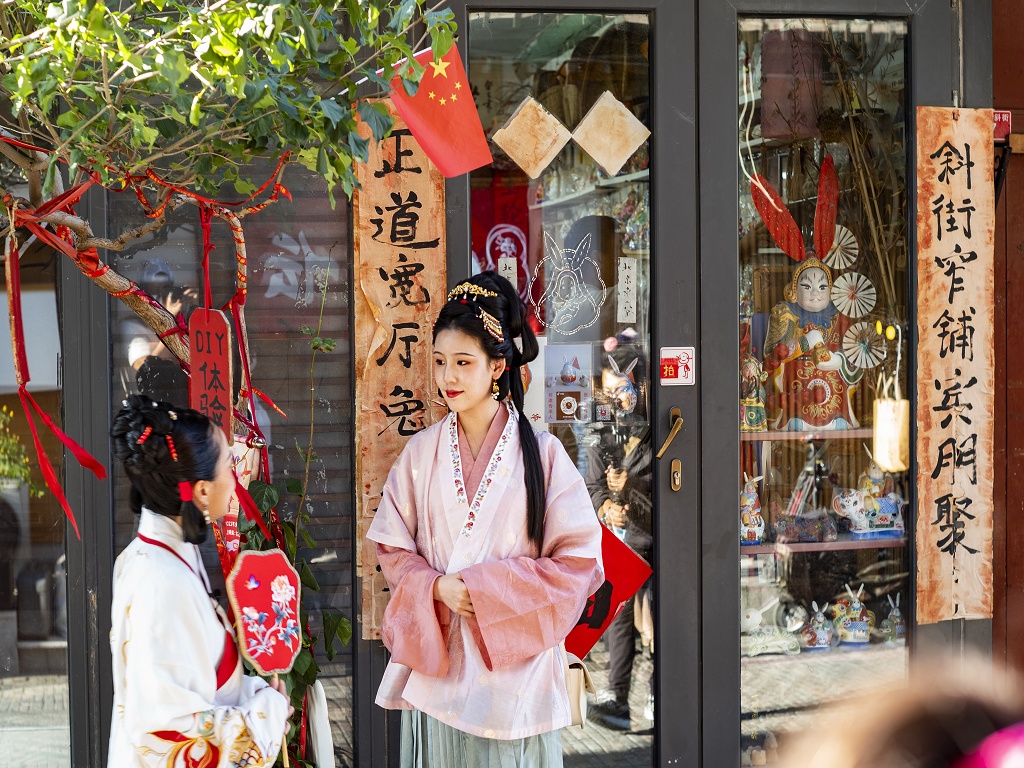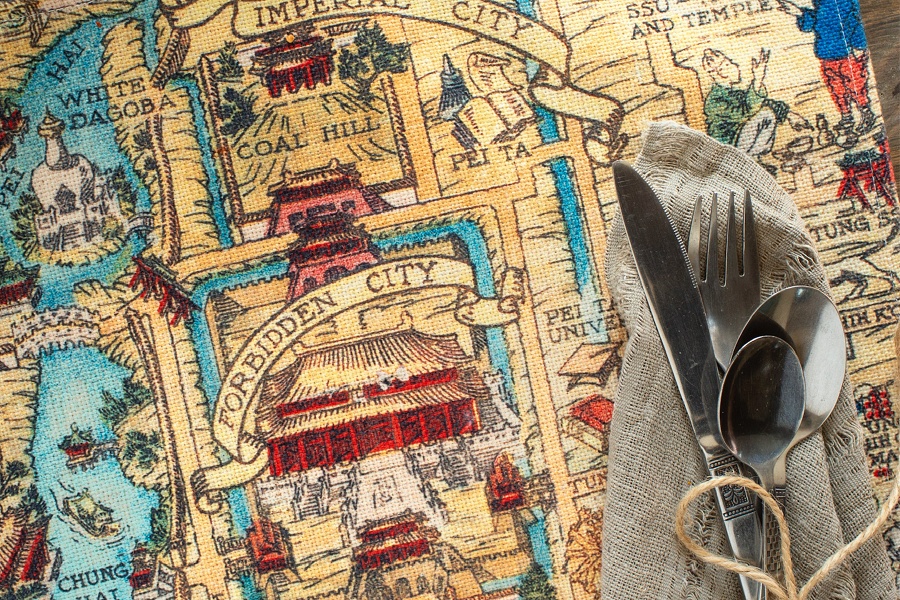Posting Vintage Beijing

Tourists seeking Beijing-themed postcards never leave Beijing Postcards dissatisfied. Tucked in an alley named Yangmeizhu Byway in the Dashilar area of Beijing’s Xicheng District, the history-focused shop offers visitors close contact with snapshots from across the eras and more, thanks to its founder Lars Ulrik Thom.
Hailing from Denmark, Thom arrived in China in 1996 and fell in love with the country. He toured the capital city along its 7.8-kilometer Central Axis, visiting the Forbidden City, Jingshan Park, and other historical sites. As the square city of old Beijing took the shape of the Chinese character “口 (kǒu),” adding the Central Axis makes it resemble another Chinese character “中 (zhōng),” the first half of the phrase “中 (zhōng)国 (guó),” the country name of China in Chinese, noted Thom. “I became fascinated with Beijing’s Central Axis immediately,” the Danish historian recalled. “It connects the past and the present of the city: As the city continues to develop, its scope also changes accordingly.”
This interest finally led Thom to delve into vintage photos and maps, the starting point for Beijing Postcards, which was founded in 2005. “What ignited Beijing Postcards was the feeling of piecing together the history of Beijing and connecting deeper with it,” he said.

In 1936, Frank Dorn, a young U.S. military attaché stationed in Beijing, spent two months creating an illustrated map of Beijing. Beijing Postcards selected six sections from this map and made a set of placemats with their explanations on the back.
A Microcosm of Beijing’s History
A girl holding a cloth with “New Year” written on it, a Peking Opera actress striking a pose, and a camel caravan carrying coal on a muddy road, and many scenes from everyday lives of Beijing residents from 1890 to 1949 can be found in Beijing Postcards. In addition to postcards, pillows, calendars, jigsaw puzzles, and myriad other souvenirs carrying reprints of vintage photos and old city maps and guidebooks can be found in the shop. Thom’s comprehensive collection of photos from over the years composes a sort of microcosm of Beijing’s history.
According to Thom, most photos were taken by foreigners like diplomats, missionaries, businessmen, and journalists who had more interest in unfamiliar scenes such as pigs running down the streets and people pushing single-wheeled handcarts. Some images were taken by Chinese people in studios when it was uncommon to own a camera in China. A huge difference between the photos taken by the visitors and the locals lies in the fact that the former aimed to record Beijing while the latter tended to commemorate certain occasions or represent family life.
While indulging in his passion for snapshots of Beijing’s history, Thom discovered many previously untold stories, many of which came from artifacts discovered outside of China. A closer look at a German military map of Beijing in 1903, for example, shows many settlements outside the Qianmen Gate housing a “floating population” who did not have a license to live within, but offered trades that were integral parts of the city. By contrast, most official maps of Beijing from 100 or 200 years ago did not depict such settlements.
“Every photo or map is a snapshot of an era,” Thom said. “Through them, people can better understand the evolution of modern Beijing and see how the city has developed over the last hundred years from different angles.”

Lars Ulrik Thom (middle) and his colleague from Beijing Postcards interview a local Beijing resident for its oral history projects. (Photo courtesy of Beijing Postcards)
Beijing Arrivals
Today, alongside selling historical souvenirs, Beijing Postcards has also morphed into organizing themed exhibitions, Talks & Walks, Historical Runs and other public events based on Thom’s archival research and oral history projects.
Talks & Walks, for example, includes activities like “History of the Hutong Walking Tour,” “Midnight in Peking Walking Tour” and more. They start with Thom’s introductions and include overviews of the history of Beijing’s Central Axis and related anecdotes, like how the Qianmen Gate was once converted into an exhibition building by German architect Curt Rothkegel. “Knowledge is in books, but a walk can help you relate to something that is geographically right there,” explained Thom.
The Historical Runs beckon participants to jog through one century of the city’s history, starting from the west to the shop and passing the oldest pagoda in Beijing, the old parliament building, and bits in between that knot everything together. “When you run, it wakes up your brain, so you notice more and are able to take in more information,” said Thom.
Thom’s pure love for history has led to a forthcoming book on the Dashilar area of Beijing. Beijing has always been a city shaped by waves of migrants. For hundreds of years, Dashilar, dubbed the “gateway of old Beijing,” was a simmering melting pot in the capital where newcomers would find their way into urban society through hard work, expertise, personal relations, or whatever they brought with them.
“The book will focus on the oral histories I’ve collected and the development of this area of the city once reserved for new arrivals,” Thom explained of the book’s working title Beijing Arrivals.